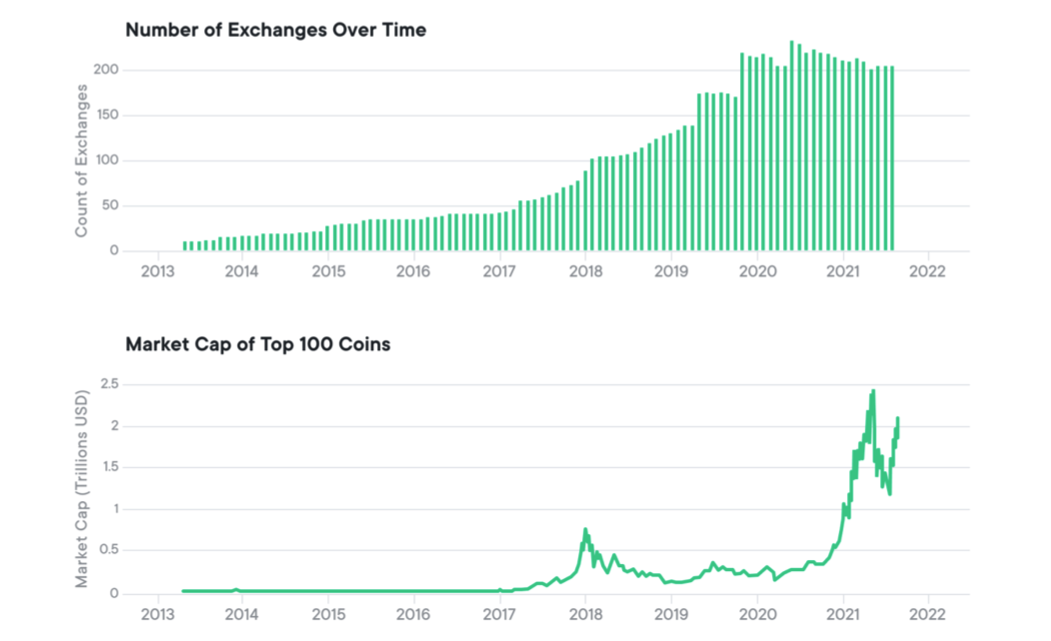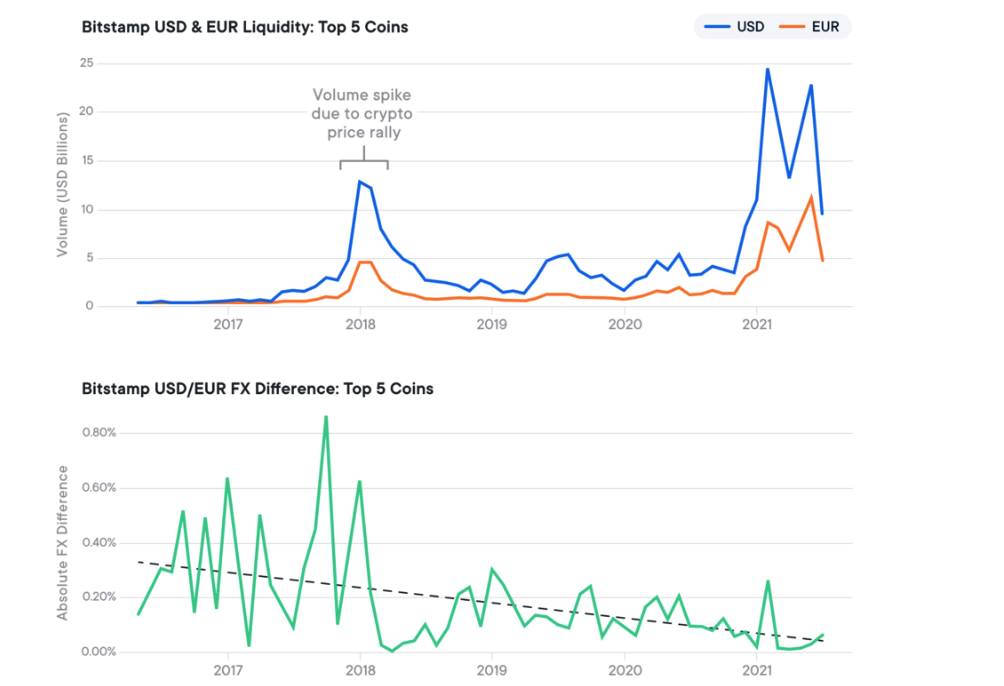Nov 8- 3:00 Minutes
Crypto Liquidity - We're Past 'If', Now it's 'When'

Every day, we witness another traditional financial institution is struggling to figure out its crypto strategy. Crypto has come past the tipping point of mainstream consciousness, specifically for cross-border payments. It is one of the earliest crypto use cases for obvious reasons. Thus, public blockchains and their native cryptocurrencies are global in nature. It is created to be secure, censorship-resistant, cheap to transact and settles instant transactions 24/7/365.
However, crypto required a few years to make a notable dent in this $130 trillion a year industry that incumbents like money-transfer companies and big banks have held a monopoly on. Therefore, the outcome for crypto has the same or better level of global liquidity than fiat, and it is readily available on-off ramps. The good news is that both these lines are trending positively.
Outmoded systems favour big banks
The realm of traditional foreign exchange (FX) has remained dormant for years. Unfortunately, it is painful for an antiquated correspondent banking system because transactions are slow, error-prone, costly, and inefficient.
Moving on towards non-G-20 currencies, it is unpredictable regarding the money arriving in its destination, and the fees involved are from 5%-10%. Hence the system has served the big-money-centre banks that monopolised access to liquidity among themselves, raking in trillions of dollars over the years.

It s been quite some time that crypto liquidity has been restricted to a handful of exchanges along with a few million dollars in volume across all assets. Now the scenario has changed suddenly changed in the past few years. From the desk of many economists, the prediction was made that it would become affordable to source liquidity for cross-border money payments with crypto over traditional fiat if:
(1) crypto cultivates in volume worldwide
(2) more significant payments are made
On- and off-ramps needs to access crypto liquidity
A pivotal factor in deploying crypto for cross-border money payments is easy on and off ramps to move from fiat currency to crypto and vice versa to access crypto liquidity. To address the first hurdle, all major money transfer companies and card networks to global crypto exchanges are taking advantage of tokenisation. Today, different venues, like stable coins and exchanges, are multiplying for moving in and out of crypto.
Likewise, fiat-backed stable coins have surfaced as one of the most popular on- and off-ramps. They ensure a relatively easy way to access crypto without converting money into fiat when making a payment immediately, eliminating the conversion taxes headache high volatility in crypto. Furthermore, this trend is apparent in the growing market cap of stable coins, which shot up from $4 billion in 2019 to $100 billion in July 2021. Adding on, providing accessibility and liquidity into crypto exchanges, decentralised finance platforms and less liquid fiat-to-fiat corridors, showing the power of what tokenised assets can do.
Digging into the data
The crypto volume, a liquidity indicator, has evolved over ages by using five top cryptocurrencies by market cap as a proxy for the larger crypto market. These assets combined accounted for about 85% of all crypto volume from 2016 to 2021.

Traditional transaction-based payments revenue are becoming obsolete
Alarm bells alert all the money-transfer companies that make a massive chunk of their revenue from FX transaction fees. Data has proven that sourcing liquidity from crypto has become more cost-effective than fiat over time for quantitative reasons. Apart from the crypto being valid for cross-border payments, its purpose is that global liquidity can truly support these payments at scale. As more options are available on customers plates, traditional companies play safe by keeping low transaction fees to maintain market share. Few companies are diversifying their revenue models, while some are going in the opposite direction. Crypto is above a $2 trillion market cap today. Many crypto companies already implement robust anti-money-laundering and know your customer (AML/KYC) programs for secure transactions.
This article is brought to you by RemitAll Software, a hassle-free remittance solution. We understand that the money transfer business is a risky process in the era of digitalisation. Our compliance safeguards each transfer across every channel without facing any obstacles. A goal is to provide advanced technology without compromising security, quality, and innovation for your clients. To know more about us, click on this link https://www.remitall.co.uk
Reading time 3:00 Minutes

Irene Asha Tirkey
Irene has completed her post-graduation in Integrated Marketing Communication from Calcutta Media Institute, Kolkata, India. Her key areas are blogging and content writing. She is in this industry for three years. Her interest areas include travelling listening to music, and painting.
Categories
Shifting Towards Digital Spell the End of Agents in Remittance. Yes or No?
May 20-2 Minutes 10 Seconds

Five Mantras For Digital Payments And User Friendly For Your Customers
May 21-2 Minutes 30 Seconds

Impact Of Remittance In Migration And Rural Development
May 27-2 Minutes 10 Seconds

 English
English Português
Português